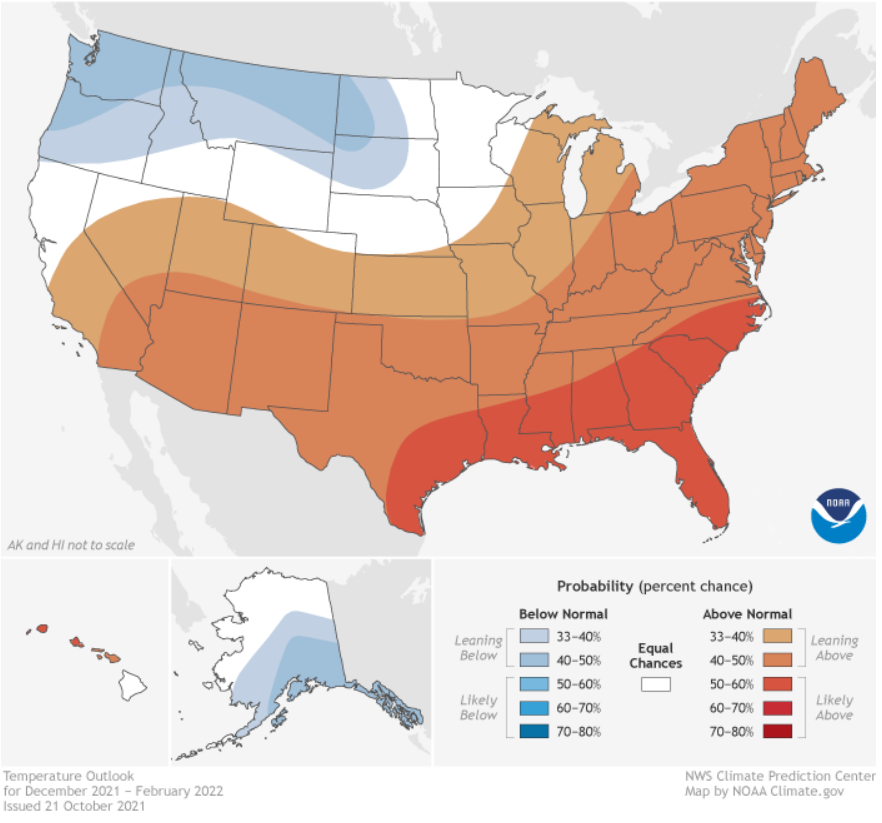NOAA released the 2021-2022 Winter Weather Outlook, which extends from December 2021 through February 2022. Below are the key points from the outlook, localized for our area. NOAA is expecting above average temperatures and drier than average precipitation for southeastern Oklahoma, southwestern Arkansas, east Texas, and northwestern Louisiana.
Key Points
- Above-average temperatures are favored across the South and most of the eastern U.S. as La Nina climate conditions have emerged for the second winter in a row according to NOAA’s Climate Prediction Center — a division of the National Weather Service.
- “Using the most up-to-date observing technologies and computer models, our dedicated forecasters at the Climate Prediction Center produce timely and accurate seasonal outlooks to help communities prepare for the months ahead,” said Michael Farrar, Ph.D., director of the National Centers for Environmental Prediction.
- “Consistent with typical La Nina conditions during winter months, we anticipate below-normal temperatures along portions of the northern tier of the U.S. while much of the South experiences above-normal temperatures,” said Jon Gottschalck, chief, Operational Prediction Branch, NOAA’s Climate Prediction Center.
- Temperature:
- Warmer-than-average conditions are most likely across the Southern tier of the U.S. with the greatest likelihood of above-average temperatures in the Southeast.
- Warmer-than-average conditions are most likely across the Southern tier of the U.S. with the greatest likelihood of above-average temperatures in the Southeast.
- Precipitation:
- Drier-than-average conditions are favored in the Southeastern U.S., including southeast Texas into Louisiana.
- Drought:
- Drought conditions are forecast to persist and develop in the Southwest and Southern Plains, including East Texas.
About the Outlook
- NOAA’s seasonal outlooks provide the likelihood that temperatures and total precipitation amounts will be above-, near- or below-average, and how drought conditions are favored to change.
- The outlook does not project seasonal snowfall accumulations as snow forecasts are generally not predictable more than a week in advance.
- Seasonal outlooks help communities prepare for what is likely to come in the months ahead and minimize weather's impacts on lives and livelihoods.
- Empowering people with actionable forecasts and winter weather tips is key to NOAA’s effort to build a more Weather-Ready Nation.
- NOAA’s Climate Prediction Center updates the three-month outlook each month. The next update will be available November 19.
Links



